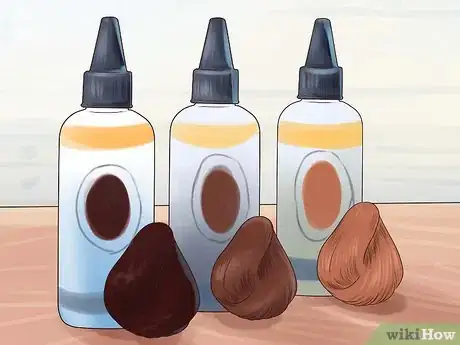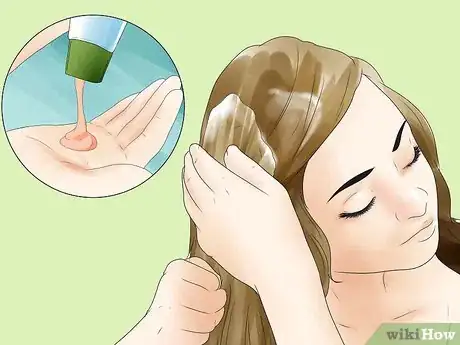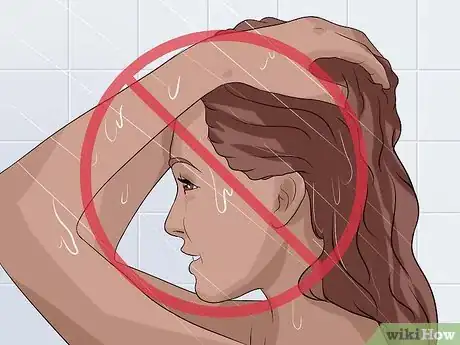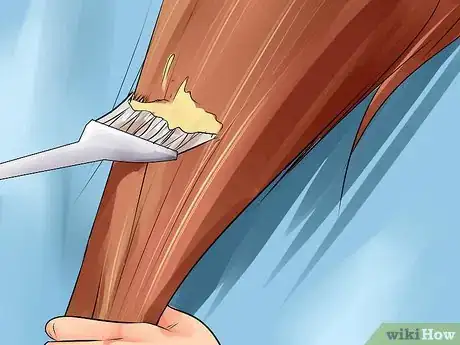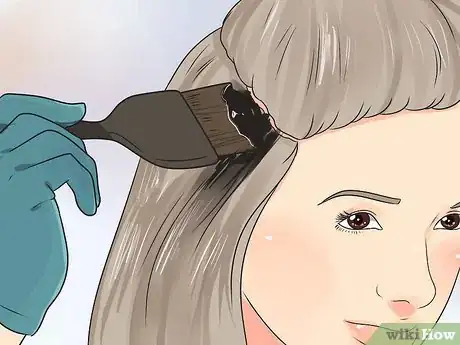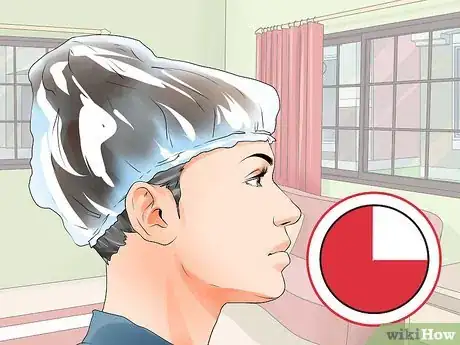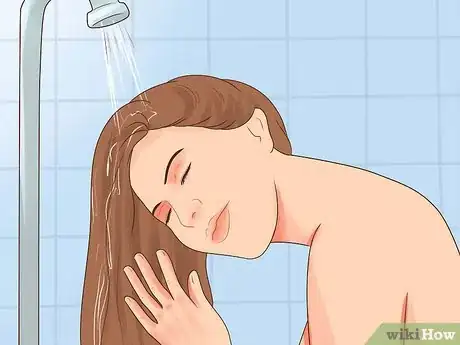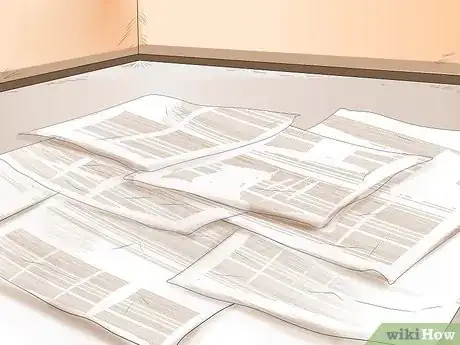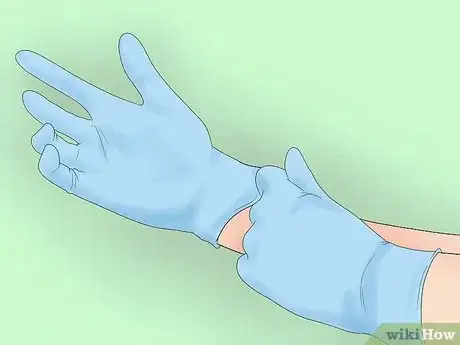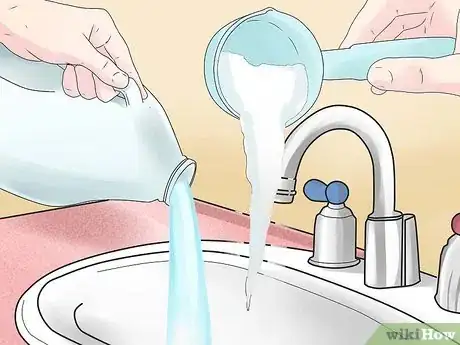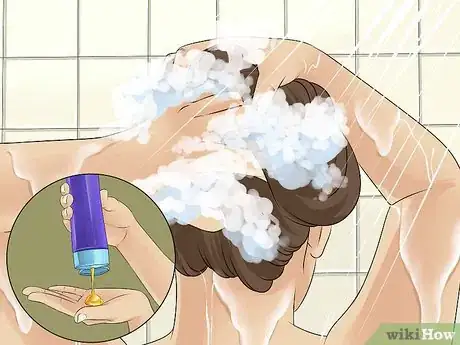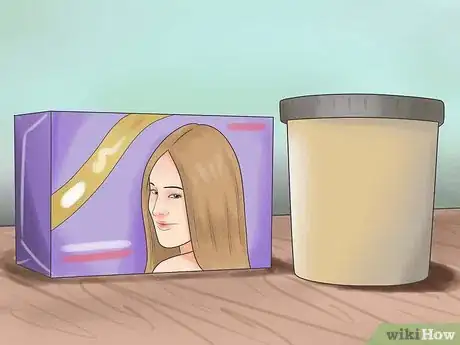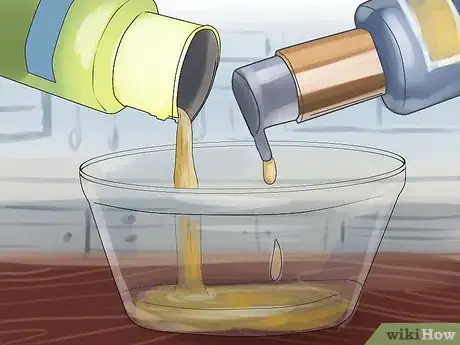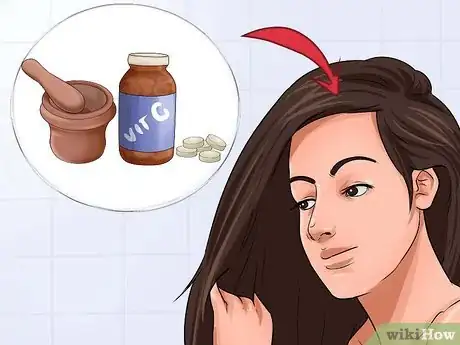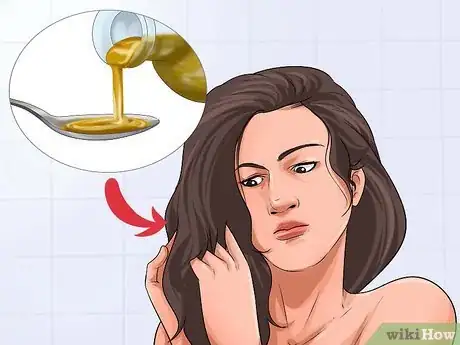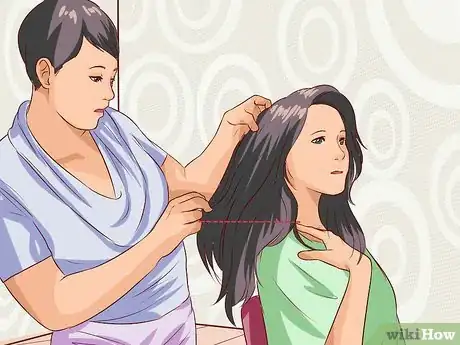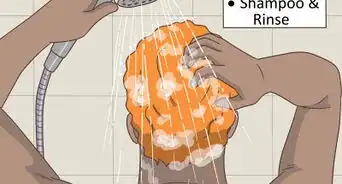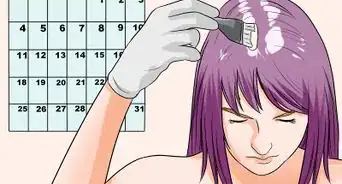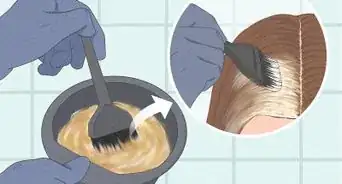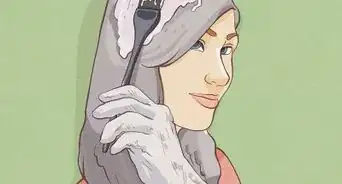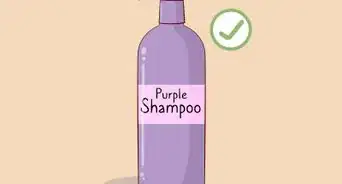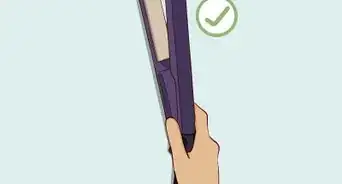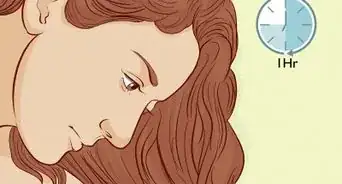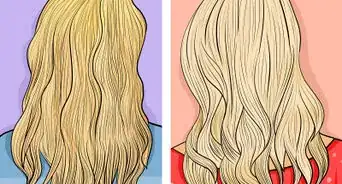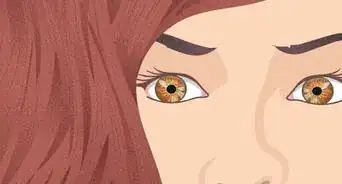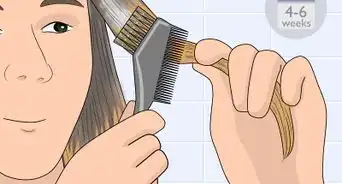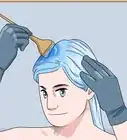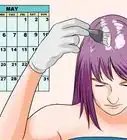This article was co-authored by Christine George. Christine George is a Master Hairstylist, Colorist, and Owner of Luxe Parlour, a premier boutique salon based in the Los Angeles, California area. Christine has over 23 years of hair styling and coloring experience. She specializes in customized haircuts, premium color services, balayage expertise, classic highlights, and color correction. She received her cosmetology degree from the Newberry School of Beauty.
There are 12 references cited in this article, which can be found at the bottom of the page.
wikiHow marks an article as reader-approved once it receives enough positive feedback. In this case, several readers have written to tell us that this article was helpful to them, earning it our reader-approved status.
This article has been viewed 233,779 times.
Dyeing your hair at home from a dyeing kit is easy, inexpensive, and even fun. But because hair dye is highly permanent, it can stain surfaces and create an unintended effect in your hair. While you won’t know what the color truly looks like until you dye your hair, you can avoid some of the common mistakes during application to prevent unwanted coloring and messes. If you need to, you may be able to correct some mistakes after they happen as well.
Steps
Avoiding Dye Application Mistakes
-
1Dye your hair to achieve a darker shade, not a lighter one. While you can subtly lighten your hair by one or two shades with dye at home, generally a darker shade will take better to your hair. Going lighter is also a more challenging and complicated process than going darker. Avoid trying to make a drastic change by sticking to a color that is just one or two shades away from your natural hair.[1]
- If you try to change your color dramatically, you might be tempted to dye your eyebrows to match. This is something you should never do, as it is unsafe to use dye so close to your eyes.
- Try mixing two hair colors that are one shade away from each other, or variants on the same shade, in order to create a more natural color change from your current shade.
-
2Go to a salon if you want to go lighter. If you do want a much lighter shade than your own, it’s best to let a professional do it.[2] You can bleach hair on your own, but it’s much easier to get consistent results from a professional. You shouldn’t try to go too dark, either. A good rule of thumb for a darker shade is one that is no darker than your eyebrows.[3]Advertisement
-
3Use a toner or gloss to correct brassy highlights. If you’re trying to get your own highlights, they might turn out an unintentionally brassy orange. Try adding a toner in an ash shade after the dye. You can also add a gloss to your hair to revive fading highlights.[4]
-
4Avoid washing your hair before dyeing. Don’t shampoo your hair the same day you dye it. Leave some natural oil in your hair to protect your scalp and help the dye take to your hair better.[5]
- If you need to clean your hair between shampooing and dyeing, just use some conditioner and rinse with water so you don’t strip away the protective oils. Your hair should be free of product buildup or dirt, otherwise color can become uneven.[6]
-
5Perform a strand test first. Test what your hair will look like once dyed by applying the dye to just one strand first. The strand test can also help you determine how long you will need to leave the dye in to achieve the results you want. Let it dry completely to check the color and adjust the shade if needed.
- Choose a strand of hair in an inconspicuous place so that it won’t be seen, or even cut a small strand away to dye it.
- A strand test will also help you check for any allergic reactions you may have to the dye ingredients. You should also perform a patch test by placing a small dot of the dye on your inner elbow and waiting 48 hours to observe if there is any redness, itching, or discomfort.[7]
-
6Apply dye to the middle of the hair first. Try applying hair dye to the middle portion of each strand of hair before you do all the roots and ends. Dye usually processes faster at the roots due to the heat from your scalp, and can appear stronger at the ends if they are dry or damaged. This can cause your roots or ends to look brighter or appear to be a different color from the rest of your hair.
- If you have leftover color in your hair from a previous dye, apply dye first to the roots and down to where the leftover color begins in your hair.
- Applying dye to one section of each strand first before going back through to do the rest gives that section a little more time with the dye on, which could compensate for any differences in color processing.
-
7Avoid staining your scalp with dye. Apply dye at your roots as close to the scalp as possible without rubbing it into the scalp, which can stain the skin and expose it to the harsh chemicals in the dye.
- Try to lift up each strand of hair you are applying dye to so that the hair is away from your head.
- Protect your hairline by dabbing on a small amount of baby oil, olive oil, or petroleum jelly to the edge of your face and neck where your hairline ends so that the dye won’t stick there.
-
8Stick to the instructed time. Follow the instructions that came with your dye as to how long to leave the color in your hair before rinsing it out. You can end up with no difference in your hair if it’s not left in long enough, or color that is way too strong and even damaging if you leave it in for too long.
- If you’ve done a strand test, or more than one, and determined that the color looks best if left in for slightly less or more time, you can follow that timing for your full dye. Just make sure to rinse it out if you start feeling burning or itching.
- Covering gray hair can require extra time. Consider purchasing a dye that’s specially meant for gray coverage, and follow any dye instructions about covering grays carefully.
-
9Rinse out according to instructions. Follow your specific dye instructions on how to rinse out the dye from your hair after the allotted time. Generally, you should rinse with warm or cool water until the water runs clear.
- Don’t skip the step in many dye instructions that says to add a small amount of water and work the dye in your hair into a lather before rinsing. This can help distribute the color and make the dye easier to wash out.[8]
- Make sure all dye is gone from your hair and face after the rinse, and use an old towel just in case it gets stained with dye residue.
- Moisturize your hair with your own rich conditioner or the small bottle that some dye kits come with.
Avoiding Dye Messes
-
1Cover your workspace. Lay down old towels, rags, newspaper, or drop cloths over the floor and surfaces on which you’ll be standing or sitting, laying down materials, or rinsing off.
- The bathroom is a good spot to avoid dye messes because you have close access to a sink and a shower for the rinsing process. However, you should make sure you get good ventilation in your bathroom to avoid the chemical fumes.
- Remember that you will have time to wait while the dye sits on your hair to process. Protect your hair and any other surfaces where you go during this time from coming in contact with one another.
-
2Wear gloves. Always wear the plastic gloves provided to you in your dye kit, or purchase disposable gloves from the store, to protect your hands from the dye.
- Wear gloves throughout the duration of your dyeing process, from mixing the dye to applying it. You can even keep the gloves on to rinse your hair out until the water runs clear.
- Even if you have the gloves included with your dye, it’s a good idea to have other disposable ones nearby, in case the first pair breaks or it’s hard to apply the dye in the typically too-big, generic size that comes in your kit.
-
3Protect your skin and clothes. Wear clothes you don’t mind getting ruined and cover your shoulders with a rag towel for extra protection. Dab petroleum jelly or oil around your hairline, ears, and neck to make it easy to wipe away dye from those areas later.
-
4Spray dye spots with bleach. If your hair dye gets on the sink or counter or another surface nearby, spray the spot with bleach and let it sit for 10 to 15 minutes before wiping it away.[11]
- If the dye got on clothes or other fabrics, you may be able to spot-treat it with bleach also, but these stains are very difficult to remove.
Removing Too-Dark Hair Color
-
1Use clarifying shampoo.[12] If your hair color ended up too dark after dyeing it, wash it immediately with a clarifying shampoo or one meant for dandruff control. Repeat washes frequently to start seeing less color.
- Make sure you use a good, rich conditioner after every wash with a clarifying or dandruff shampoo, as these can be drying and strip good oils from your scalp and hair.
- You can also wash a second time with a high-quality moisturizing shampoo after rinsing out the clarifying shampoo.
-
2Use a color reducer product. Purchase a color reducer from many of the same brands that carry hair dye to help get rid of some of your dye color.
- Note that there may be some difference between a color remover and a color reducer. A remover may contain bleaches that are harsher on your hair and could affect your natural color, not just the dye color. Reducers are more gentle at helping strip just the dye, so these should be favored.[13]
- Be sure to follow the directions that come with the product carefully just as you would with hair dye instructions.
-
3Add a little detergent or dish soap. Add a small amount of mild dish soap or laundry detergent to regular shampoo to help strip color out.
- Note that this method is very drying, and you should condition hair well to help replace oils lost.
-
4Use vitamin C. Crush up effervescent or chewable vitamin C tablets and add the powder to your normal shampoo. Work this through all of your hair, cover it, and leave it on for 20-60 minutes to help lighten the color.[14]
- Note that vitamin C can be too harsh or irritating on some scalps, so you should remove it right away if it’s bothering you.
-
5Mix baking soda and lemon juice. Try a natural treatment of fresh lemon juice and baking soda to pull some color out. Mix equal amounts of each together and let it sit in your hair for just a few minutes before rinsing it out.
- Be careful not to leave this treatment in too long, as it is very drying and potentially damaging if left in.
- Use this treatment to remove dye stains from skin, too.[15]
-
6Do a hot oil treatment. Apply hot oil to your hair and cover it for an hour to help pull out dye color.
- Use this treatment if you don’t want to dry out your hair, or have already dried it out using other removal methods and want to regain some moisture. This method will actually nourish hair in the process.
-
7Go to a salon rather than keep re-treating. If your color is not coming out or looking how you want it too, try another shade in a few days or weeks. However, avoid re-treating your hair multiple times with home dye if you’re not getting it right. See a professional to fix it correctly.[16]
- The more you dye your hair, the more damage you do to it and the harder it is for a professional to fix it. Save the money you’d spend on multiple hair dye kits and go to the salon instead.[17]
- Getting your hair professionally color-corrected after a botched dye job can be expensive. You may ultimately save money by going to a salon from the start instead of trying to dye your hair at home.
- Ask a colorist to do a very mild lightening bath on your hair, which uses a small amount of bleach and water, and careful monitoring. This is much gentler and less expensive than other extensive color removal processes.[18]
Expert Q&A
Did you know you can get expert answers for this article?
Unlock expert answers by supporting wikiHow
-
QuestionHow can I repair my hair after dying it?
 Christine GeorgeChristine George is a Master Hairstylist, Colorist, and Owner of Luxe Parlour, a premier boutique salon based in the Los Angeles, California area. Christine has over 23 years of hair styling and coloring experience. She specializes in customized haircuts, premium color services, balayage expertise, classic highlights, and color correction. She received her cosmetology degree from the Newberry School of Beauty.
Christine GeorgeChristine George is a Master Hairstylist, Colorist, and Owner of Luxe Parlour, a premier boutique salon based in the Los Angeles, California area. Christine has over 23 years of hair styling and coloring experience. She specializes in customized haircuts, premium color services, balayage expertise, classic highlights, and color correction. She received her cosmetology degree from the Newberry School of Beauty.
Master Hair Stylist & Colorist
-
QuestionWhat's the safest way to remover color from hair?
 Christine GeorgeChristine George is a Master Hairstylist, Colorist, and Owner of Luxe Parlour, a premier boutique salon based in the Los Angeles, California area. Christine has over 23 years of hair styling and coloring experience. She specializes in customized haircuts, premium color services, balayage expertise, classic highlights, and color correction. She received her cosmetology degree from the Newberry School of Beauty.
Christine GeorgeChristine George is a Master Hairstylist, Colorist, and Owner of Luxe Parlour, a premier boutique salon based in the Los Angeles, California area. Christine has over 23 years of hair styling and coloring experience. She specializes in customized haircuts, premium color services, balayage expertise, classic highlights, and color correction. She received her cosmetology degree from the Newberry School of Beauty.
Master Hair Stylist & Colorist
-
QuestionHow long do you have to wait before you can dye your hair again?
 Laura MartinLaura Martin is a Licensed Cosmetologist in Georgia. She has been a hair stylist since 2007 and a cosmetology teacher since 2013.
Laura MartinLaura Martin is a Licensed Cosmetologist in Georgia. She has been a hair stylist since 2007 and a cosmetology teacher since 2013.
Licensed Cosmetologist
Warnings
- Removing hair color with the processes above does not work for too-light hair color. For this, you should consult a colorist at a salon, or wait a couple weeks to try a darker shade.⧼thumbs_response⧽
- Never dye your eyebrows with a home kit of hair dye. Getting the chemicals in the dye into your eye can seriously injure or blind you.⧼thumbs_response⧽
- Don’t dye your hair too often, as this will almost certainly damage your hair. You can compromise the health of your hair and your future ability to dye it when you dye too much and too often.⧼thumbs_response⧽
References
- ↑ http://www.goodhousekeeping.com/beauty/hair/tips/a24206/hair-dyeing-mistakes/
- ↑ Christine George. Master Hair Stylist & Colorist. Expert Interview. 10 January 2020.
- ↑ http://www.cosmopolitan.com/style-beauty/beauty/advice/a44880/hair-color-mistakes/
- ↑ http://magazine.foxnews.com/style-beauty/biggest-mistakes-youre-making-coloring-your-hair-at-home
- ↑ http://www.goodhousekeeping.com/beauty/hair/tips/a24206/hair-dyeing-mistakes/
- ↑ http://stylecaster.com/beauty/the-worst-at-home-hair-color-mistakes/
- ↑ http://www.wella.com/retail/en-AR/article/text/hair-color-safety-test
- ↑ http://www.goodhousekeeping.com/beauty/hair/tips/a24206/hair-dyeing-mistakes/
- ↑ http://www.allure.com/hair-ideas/2015/how-to-fix-at-home-hair-color-mistakes#slide=5
- ↑ http://www.harpersbazaar.com/beauty/hair/advice/a4503/how-to-remove-hair-dye/
- ↑ http://www.allure.com/hair-ideas/2015/how-to-fix-at-home-hair-color-mistakes#slide=4
- ↑ Christine George. Master Hair Stylist & Colorist. Expert Interview. 10 January 2020.
- ↑ https://www.haircrazy.com/articles/misc-articles/10-ways-to-remove-hair-colour/
- ↑ http://www.howtohairgirl.com/2015/03/how-to-remove-hair-color-at-home/
- ↑ http://www.howtohairgirl.com/2015/03/how-to-remove-hair-color-at-home/
- ↑ http://www.cosmopolitan.com/style-beauty/beauty/advice/a44880/hair-color-mistakes/
- ↑ Christine George. Master Hair Stylist & Colorist. Expert Interview. 10 January 2020.
- ↑ https://thestylingedit.com/how-to-fade-hair-colour
About This Article
Dyeing your hair at home is an easy and inexpensive way to get a new look, but there are a few things to keep in mind to avoid common mistakes. Firstly, always wear the gloves provided in the hair dye kit for the duration of the process. This will prevent staining your skin and the dye can be difficult to remove. Next, make sure you follow the instructions for the dye kit completely. Stick to the instructed amount of time to leave the dye in your hair before washing it out, as this will avoid hair damage or the color being too strong. If the hair dye continues to not turn out how you hope, it’s best to go to a salon and let a professional take over. This will help you to avoid mistakes and to be happy with your locks. For more advice from our Licensed Cosmetologist co-author, like how to remove a dye color that’s too dark, read on!
